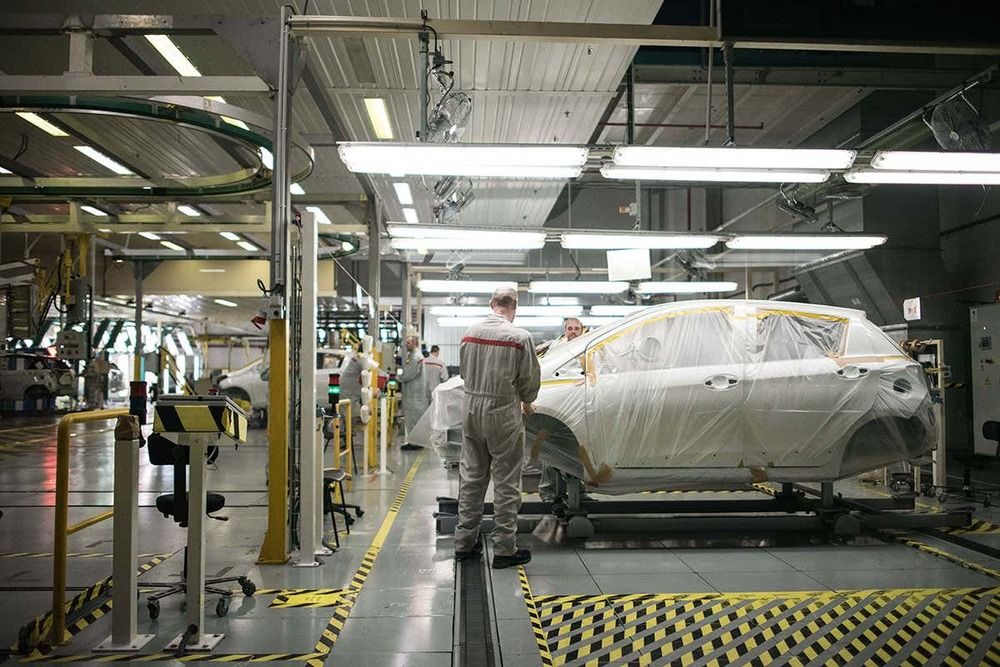A genetic tweak can make cells self-destruct in the presence of CRISPR and could be used to shut down cell therapies if they go rogue.



Current-day EVs generally use graphite anode batteries, which tend to provide shorter range compared to their gas-guzzling brethren, according to the researchers. Silicon anodes, on the other hand, have ten times the capacity — but are much worse at holding their capacity over time.
Frying Batteries
The team, led by Hun-Gi Jung, came up with a way to keep these silicon anodes stable by using “a simple thermal process used for frying food,” according to a statement, which involves the use of water, oil, and starch.

Choice is the one thing our creators gave us. Me, personally I prefer hemp, and not just because I smoke the female version for medicinal reasons, but because scientifically it makes sense, and can help unscrew #AmericanFarmers…Yes we need more forests, not less. However, we don’t need to use trees, when we have hemp. Pembient can 3D Print ivory, thus making animal Ivory obsolete, yet people still kill for Ivory. We can make wood products from hemp, yet we still fell trees. #HowDumbAreWe
Eco-Friendly Our hemp is grown using sustainable methods, which helps eliminate deforestation.
Made in the USA All hemp growth and material production is conducted in the United States of America.
Multiple Uses HempWood can.

Its timeless appeal is evident globally, from jewelry in Asia to tools in the Middle East to containers in Europe, and beyond. Only in the last century have moldable, petroleum-based plastics overshadowed it. Our mission is to use biotechnology to grow horns larger than animals can produce, thereby unlocking the medium’s full potential…and eliminating the demand for animal ivory.
Biofabricated Horn.

Researchers at MIT reported Thursday that they have harnessed artificial intelligence to identify a completely new antibiotic compound that killed all but one of the antibacterial-resistant pathogens they tested it on. Drug-resistant bacteria are a large and growing problem, causing 2.8 million infections and 35,000 deaths in the U.S. each year and more in developing countries, STAT News reports. The computer learning model developed at MIT, described in the journal Cell, has the potential to identify many new types of antibiotics.
The researchers named the compound halicin, after HAL, the initially useful, eventually murderous sentient computer in 2001: A Space Odyssey. They also discovered eight more promising antibacterial compounds, two of which appear very powerful. They tried out halicin on mice and plan to work with a nonprofit or drugmaker to see if it’s effective and safe in humans.
The MIT team’s machine-learning model independently looked for certain properties — in this case, the ability to kill E. coli and not harm humans — among about 2,500 molecules in a drug repurposing database. Halicin was originally considered as a treatment for diabetes.

Robots are replacing human manufacturing workers in France, and making companies more productive in the process.
Daron Acemoglu at the Massachusetts Institute of Technology and his colleagues analysed more than 55,000 French manufacturing firms, noting which ones bought robots between 2010 and 2015 and what impacts the purchases had.

Researchers have discovered that the powerhouses of our cells, the mitochondria, also play a role in triggering cells to enter senescence, a dormant state in which cells cease to divide and begin to shut down, ready to die.
Mitochondria trigger cytoplasmic chromatin and inflammation
The new study shows that the mitochondria in each cell communicate with its nucleus, causing it to shut down and enter a senescent state [1]. Dr. Peter Adams, one of the study’s researchers, has spent over a decade investigating how chromatin clusters, a mixture of DNA and proteins typically encountered in the cell nucleus, actually leak out of the nucleus and into the cytoplasm in senescent cells. This leaking then triggers a cascade of inflammatory signals, which are linked to the onset of various age-related diseases.
